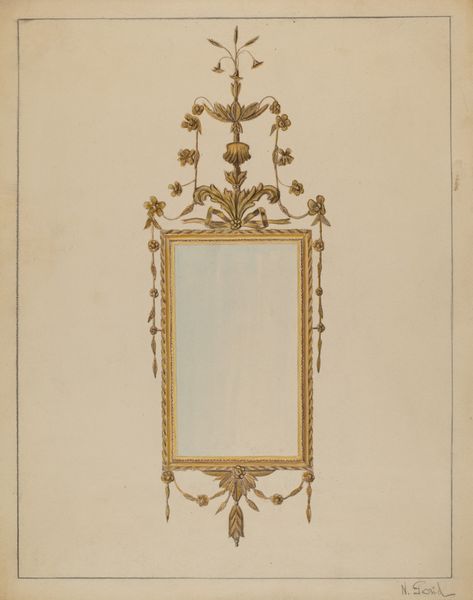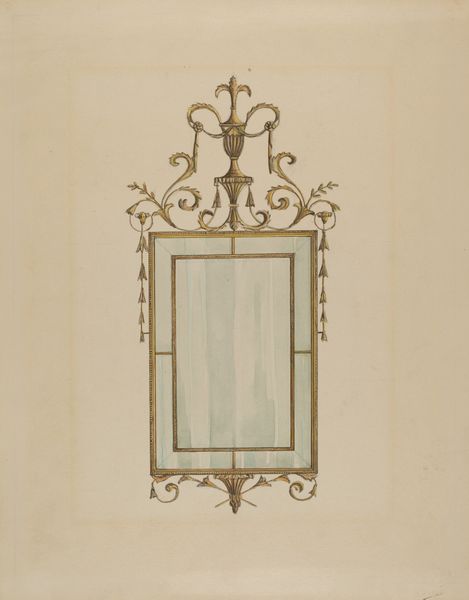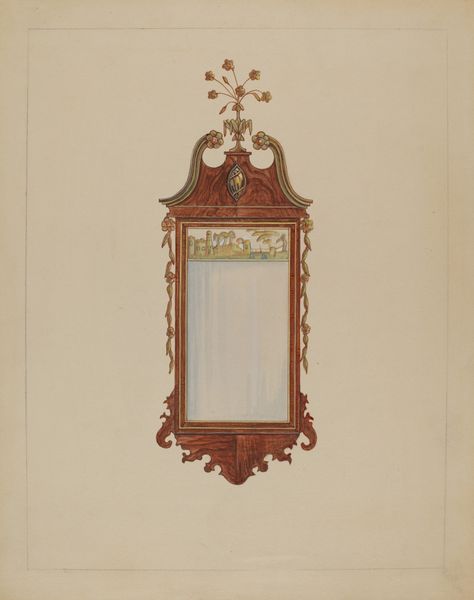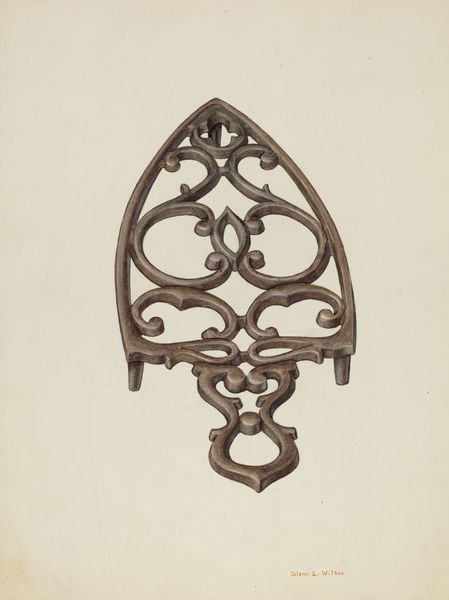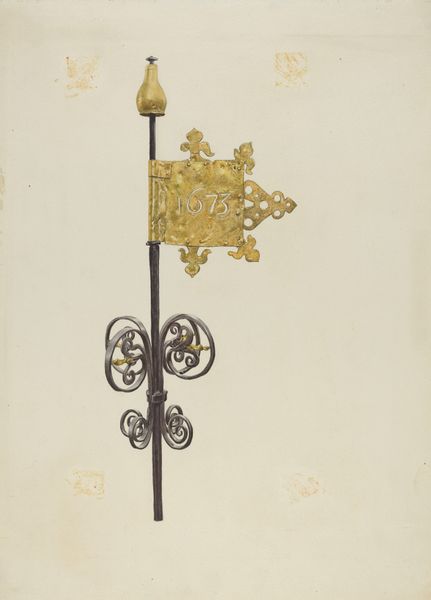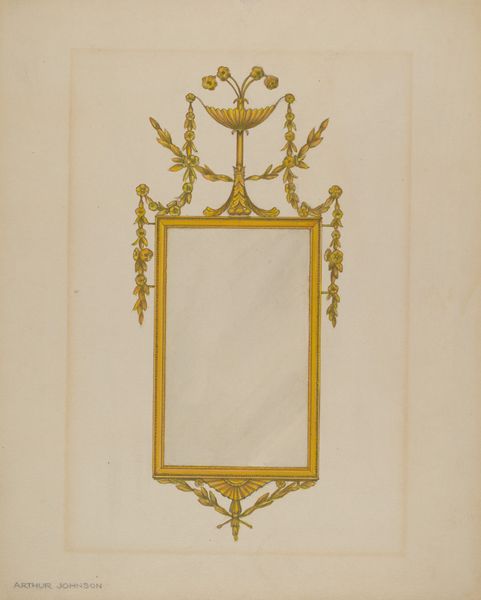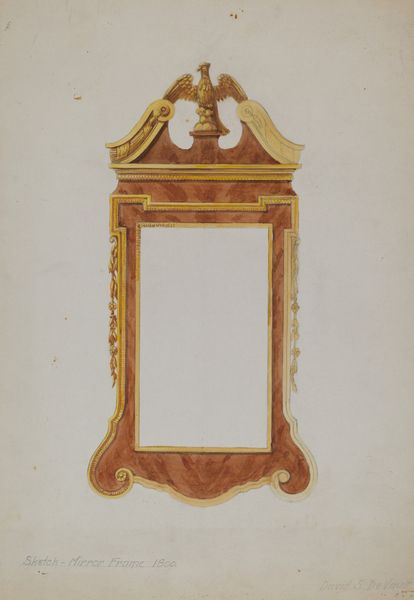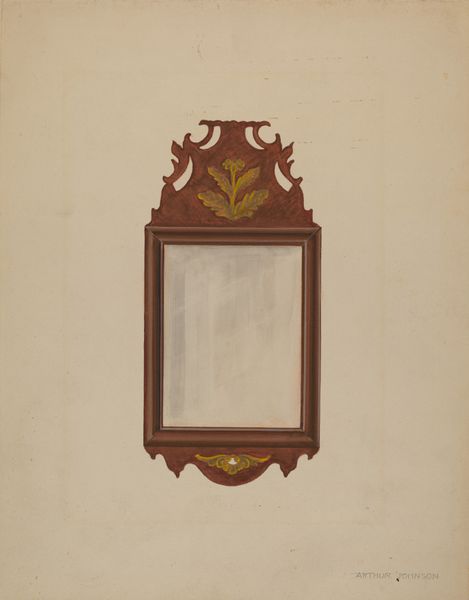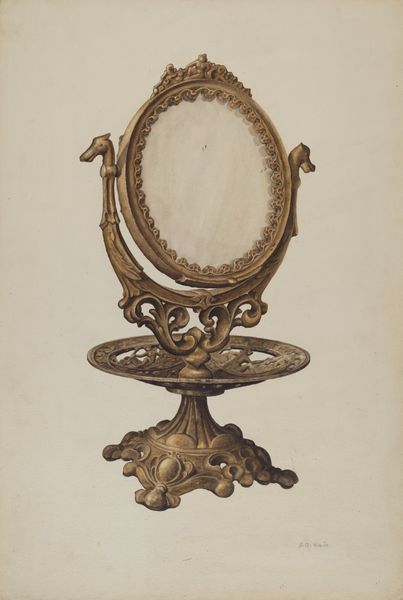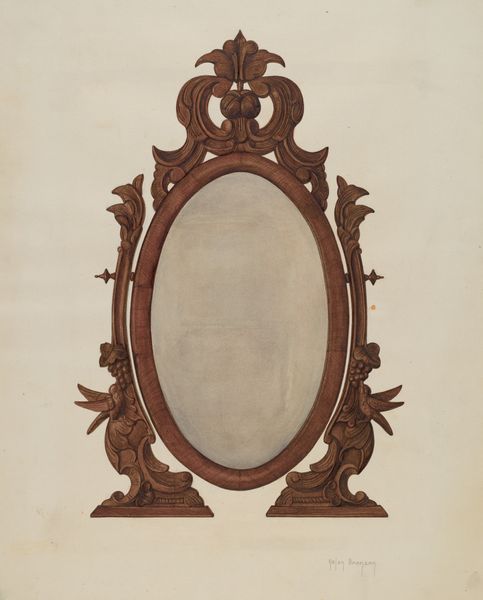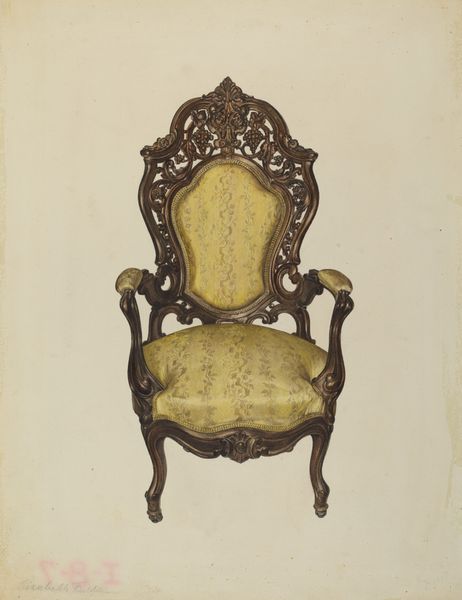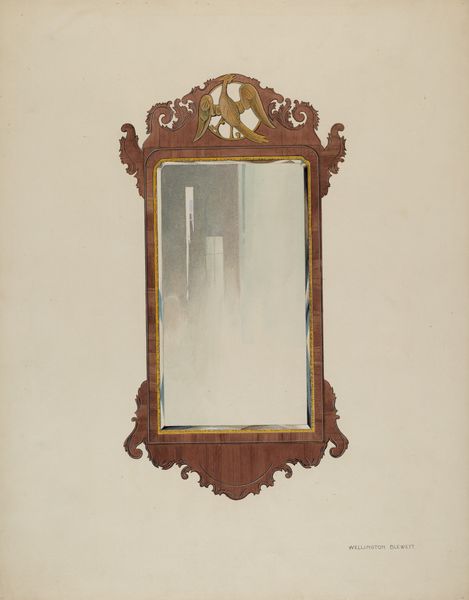
drawing, metal, pencil
#
portrait
#
drawing
#
metal
#
sculpture
#
charcoal drawing
#
pencil
#
academic-art
#
decorative-art
Dimensions: overall: 45 x 36.2 cm (17 11/16 x 14 1/4 in.) Original IAD Object: Overall: 15 1/8"high; 9 1/2"wide
Copyright: National Gallery of Art: CC0 1.0
Curator: Looking at this, I'm immediately struck by the elaborate details and the almost theatrical face peering from the top. It feels like a portal to another era, a relic brimming with unspoken stories. Editor: Well, this particular item is entitled "Mirror Frame" crafted by John H. Tercuzzi around 1940. The piece combines drawing with metal, a fascinating confluence that invites discussion about utility, aesthetic movements, and their symbolic function within that decade. Curator: Absolutely, and the blending of media enriches that visual symbolism. Those ornate embellishments—leaves, scrolls, that fierce, yet elegant, face—feel like vestiges of classical motifs. Editor: I wonder, though, about placing decorative arts squarely within 'high' art contexts. A mirror is traditionally a domestic object, reflecting the lives and identities of the individuals within those spaces. In the 1940s, mirrors may be implicated with identity under pressure during WWII—who saw themselves? And how did these mirrors in turn perpetuate unrealistic representations of femininity and identity at large? Curator: That is an important contextual point. And yet the presence of classical figures woven into its design implies a continuous cultural memory, as the frame becomes imbued with a longer trajectory. The face almost feels protective, acting as a guardian of reflection. Is it just offering back what is there or something more transformative? Editor: I see the appeal of continuous memory. It also seems likely it upholds or obscures the systemic violence around it, given decorative arts have always been embedded with coded messages, be they related to status, wealth, gender. If mirrors are for reflecting reality, perhaps the embellishments help manufacture consent. Curator: Interesting, very interesting. Editor: Considering both the artistic qualities of this "Mirror Frame" and how this object sits as an intersection point where our personal identities encounter broader sociopolitical meanings helps me more closely analyze the frame, how people were asked to look at themselves then, and even, now. Curator: Yes, thinking about that continuous, critical, and evolving context gives me pause too. The frame presents its subject, as frames do—but it does not finish or determine them. It is something like that with symbols in themselves—they point but we are responsible for the navigation.
Comments
No comments
Be the first to comment and join the conversation on the ultimate creative platform.

